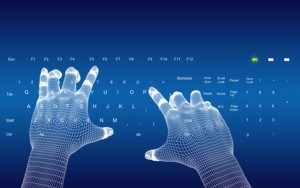In the article, Understanding Visual Rhetoric in Digital Writing Environments, by Mary Hocks gives information about rhetoric found in digital writing environments. She explains how teachers can teach their students to write about the visual rhetoric in digital environments. Hocks introduces the subject of the digital writing environment by stating that in this current period of time the prevalence interactive media is increasing as a result visual rhetoric has become critical when writing. Digital writing involves mixing together words and visuals. Hock refers to this type of writing as a hybrid of “verbal, spatial and visual”. Hybrid literacy employs a complex interaction between verbal and visual meanings. Because of this new relationship of rhetoric, changes must be made to supplement for this new definition of writing. Teachers who in the past taught rhetoric in print are now having to try teaching their students visual rhetoric. Hocks goes on to describe some key feature of digital rhetoric by analyzing two scholarly essays by Anne Wysocki and Christine Boese. She introduces the terms audience stance, transparency, and hybridity. Hock defines audience stance to be the encouraging or discouraging of interactivity from audience created by the author, examples of diferent ways this can be utilized are shown in Wysocki’s hypertext. Transparency is defined as how an online document organizes and establishes conventions like print, graphic design, film, and web pages; that make it clear and familiar to a reader, example Wysocki’s hypertext is given showing how easy the reader can navigate through the text. Hybridity is the ways in which online documents combine and construct visual and verbal designs, once again Hocks gives Wysocki as an example stating that her work merges images and text in thoughtful and unconventional ways which allows readers to experience a new way of learning. Hock then introduces The Ballad of the Internet Nutball written by Christine Boese, continuing to explain how the text also displays the three aspects of visual digital rhetoric. She then compares both Wysocki and Boese articles on how they utilize audience stance, transparency, and hybridity. Before Hock explains how teachers can teach their student visual digital rhetoric, students first need to be shown how to use multimodality in order to build new knowledge. Having technology cable of producing this knew knowledge is also required. She continues by stating that, “students need to learn the distanced process of how to critique the saturated visual and technological landscape that surrounds them as something structured and written in a set of deliberate rhetorical moves”. After establishing these precedents, Hock then explains how teachers can teach their students visual digital rhetoric in two steps. First assignment assigned must complement the objective of the course. Second student need to learn how to plan their projects by applying storyboards. Mary Hocks article explains the digital writing environment is being able to recognize the importance of meaning concerning text that combine text and visual cues. She then applies how this visual digital rhetoric are established in three terms audience stance, transparency, and hybridity; giving examples of scholarly text to support her claim. Hocks concludes by explaining the process teachers can take to teach their students about the visual rhetoric in digital environments.
Hocks, Mary E. “Understanding Visual Rhetoric in Digital Writing Environments.” College Composition and Communication 2003: 629. JSTOR Journals. Web. 7 Mar. 2016.
